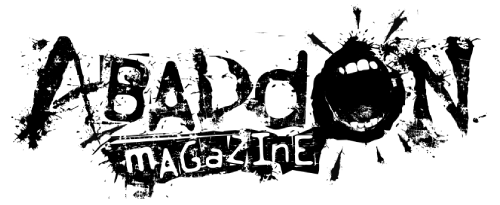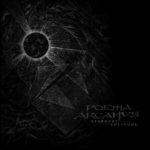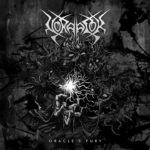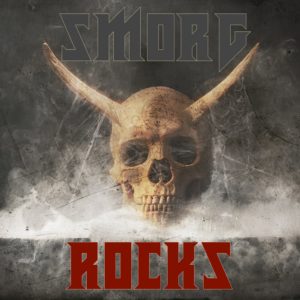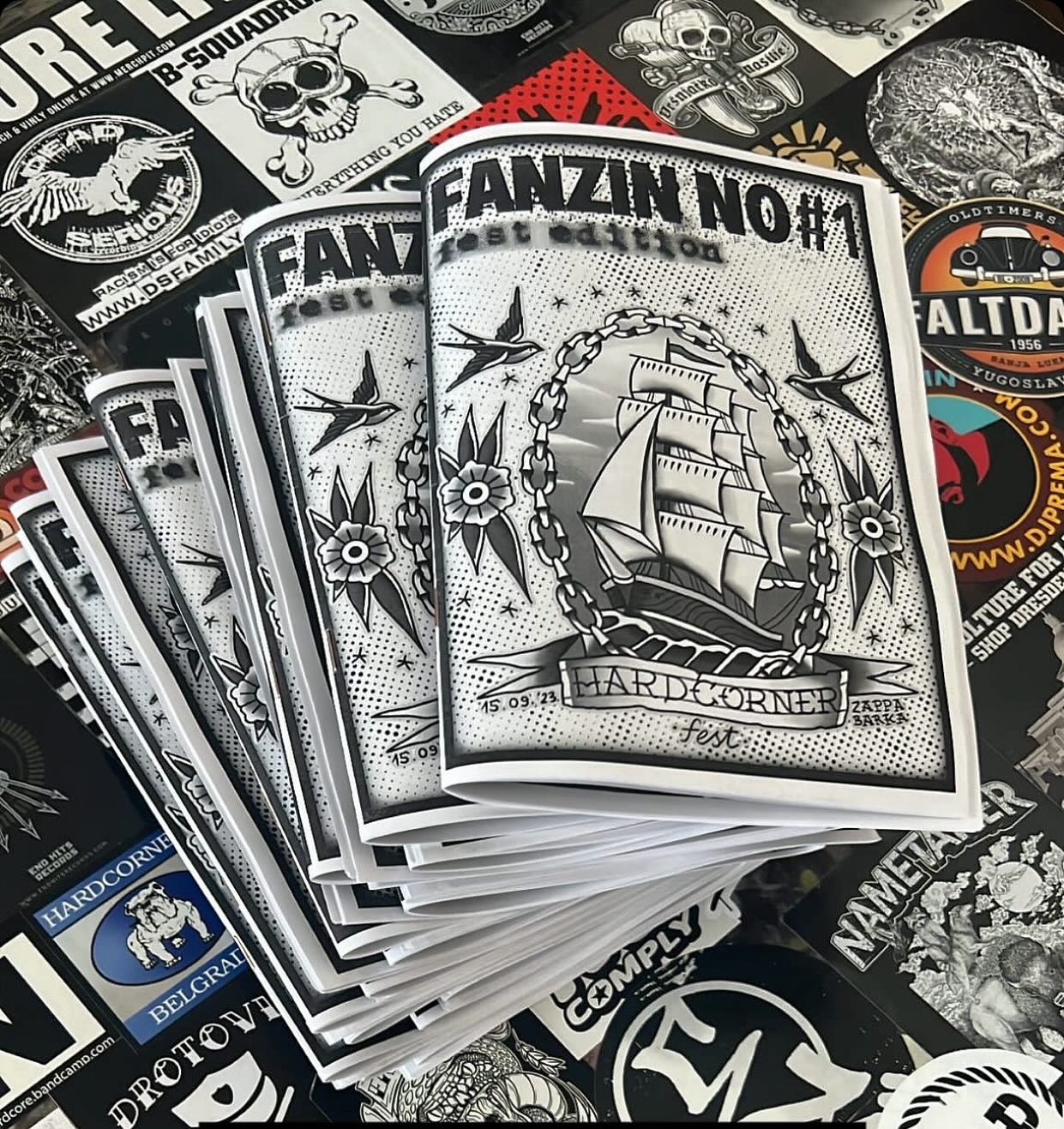I’ve decided to fuse two bands in one interview. Most of all because they share members and it would be interesting to cross-examine them. On the other hand, while being black metal in their general orientation, they take their music and themes in different directions. So, let’s dive into the world of Dutch black metal. Asgrauw and Meslamtaea ladies and gentlemen.
Hello boys and welcome to the pages of Abaddon Magazine! For starters, tell me what do your rehearsals look like? As the whole Meslamtaea is involved in Asgrauw, do you sneak in a song or two during Asgrauw rehearsals?
Hello Milos, thanks for your interview. Although Asgrauw and Meslamtaea share band members, the two are completely different entities. Meslamtaea is a semi-solo studio project by F. (Batr) with W. (Kaos) on 2nd vocals, while Asgrauw is an old skool black metal horde that plays live, with all three members fully involved. (Vaal: guitars & vocals, Kaos: bass & vocals, Batr: drums). Asgrauw rehearses weekly in a small shed in the Dutch village of Groesbeek. The Asgrauw rehearsals often start with playing a live set, after which we work on new songs. We are really focused and always busy with the music and everything that goes with it.
Meslamtaea is the older of the two bands. However, if I may note, it seems like the band has become a lot more productive since Kaos joined in. I’m curious about the early years of the band. I haven’t heard the first records of the band, so did the music back then differ from what you are performing now? Did Kaos bring in some of his own ideas, thus influencing your present creativity?
Batr: The solo project, which would become Meslamtaea, started in the nineties when I was around 16 years. I used to play drums. Out of necessity started to learn guitar and bass, as in and around the village I grew up were no like-minded musicians. Also I had to find a way to record everything. I soldered myself some cables which were connected with two cassette decks and a microphone. In this primitive process of ‘overdubbing’ there was no mixing, EQ or effects. But it was effective. One of these very early tracks (Origin of Gods) was released on the “Illusion” demo and was re-released on the “New Era” full length cd (2005).
Then “Cool Edit” recording software made its appearance, which made the computer keep crashing all the time. In between the inevitable ‘blue screen of death’s’, Meslamtaea attempted to record black/trash/folk with NWOBHM influences those days. Somewhat weird and one-off. Back in the days Meslamtaea was never very productive. I always said that I didn’t make music because I wanted to, but because I need to. It was the truth. Writing and recording involved a lot of frustration. But there was this urge to express myself and I kept going. This is still the case today. Making this music on your own is a lonely path which requires a different mindset than playing in a band.
Meslamtaea did a split vinyl with Cultus (Gedachten, 2008), on which Meslamtaea sounded more atmospheric and dark. The added synths were partly responsible for this. After releasing an EP of my other project Annwfyn (Zicht, 2013) I did some session work. But musically there didn’t happen too much and Meslamtaea was in coma.
There’s a gap of nearly 10 years between “Gedachten” and the following 7” vinyl “Neutronenstorm” (2017). However there are some parallels with the old sound, the concept of Meslamtaea was re- invented. The full length “Niets en Niemendal” followed, and as I speak, the experimental album “Geketend in de schaduw van het leven” will be released in a few weeks on Babylon Doom Cult Records (limited vinyl) and Tartarus records (limited tape). Some guests have been invited to contribute to this album. Fraukje (Doodswens) and Kevin (Ibex Angel Order) on vocals. Otto (Dead Neanderthals) did some incredible sax parts. We’re happy to have such great and talented people on the album.
Kaos is permanently involved as 2nd vocalist since 2017. However he has not much influence in the writing process, his typical spoken and intensive loud shouting vocals leave a clear mark on the music.
However, Meslamtaea wasn’t the only band Batr was involved back at the turn of the century. Did the other bands you were involved with help you express other sides of your musical interests? Or maybe they have influenced what you were doing with Meslamtaea?
Batr: I wasted some time in death metal bands that didn’t go anywhere. Also I did some drum session work for Cultus and a few other projects. I would like to highlight Sagenland in particular. This was an Ulver-worship project that only released a split vinyl in 2005. Sagenland was never declared dead though, and a new album is at the press plant as I speak. It includes some re-recorded old songs and a handful of new tracks.
Annwfyn was a personal project close to me. It was acoustic-orientated dark psychedelic music with spoken words by A. It has a kind of nostalgic and ethereal atmosphere. Annwfyn has absolutely determined the direction of the current Meslamtaea. In terms of music, atmosphere and lyrics.
I hope you don’t mind, but I just have to ask. On Meslamtaea’s first album, you had a song titled “Corona”. Please do elaborate on it.
Batr: In the early days I was interested in apocalyptic- and space themes. Many lyrics deal about chapters from the books of Erich von Daniken. “Chariots of the Gods” is a must-read. He claims that extraterrestrial life had visited earth, which determined the ‘god’ image of early human culture. If you read the book it seems plausible. “Corona” specifically was about the world in a distant future dealing with a dying sun.
What made you take a long break in the band’s activity? Somehow in the midst of that break you got into Asgrauw. Did your participation in Asgrauw renew your spark for Meslamtaea? Especially since the first record you put out after the resurrection of the band was a split 7” with Asgrauw.
Batr: When the millennium had passed a few years, I came to the conclusion that no new “Anthems”, “Bergtatt” or “Nemesis Divina” epos would be ever recorded again. New black metal lacked something so I started discovering other genres. Then I met guitarist Vaal, who was looking for a drummer for his band Asgrauw. I did not feel like being in a band anymore and hadn’t kept up with the scene. But I went out to see the guys out of curiosity. I haven’t left since. At one point Alex from the underground label Zwaertgevegt claimed that he would release a split 7” with Asgrauw, if Meslamtaea recorded new material. No sooner said than done. The song Neutronenstorm sounded traditional, but after that the urge for experiment started to bubble again.
Asgrauw was formed in 2010, and it already had a full line-up, ready for stage performance. Meanwhile, Meslamtaea was a one-man band and only recently became a duo. Did you ever consider putting Meslamtaea on stage? I guess it would be quite difficult, given the current complexity of your musical expression. Still, maybe it could be a one-off? Some special occasion?
Batr: In contrast to Asgrauw, that is reproducible in a live situation, Meslamtaea has a completely different approach to black metal. Meslamtaea is a studio project. It is too complicated to perform this material live. I don’t know how to get such a group of musicians together, nor do I want to put the energy into it.
Asgrauw however, has a full live line-up. We are not often on a stage. But when it happens, we demolish the venue. We play as if we were a punk band… (Too) fast and full of energy, leaving the stage in smoke and the smell of sour sweat.
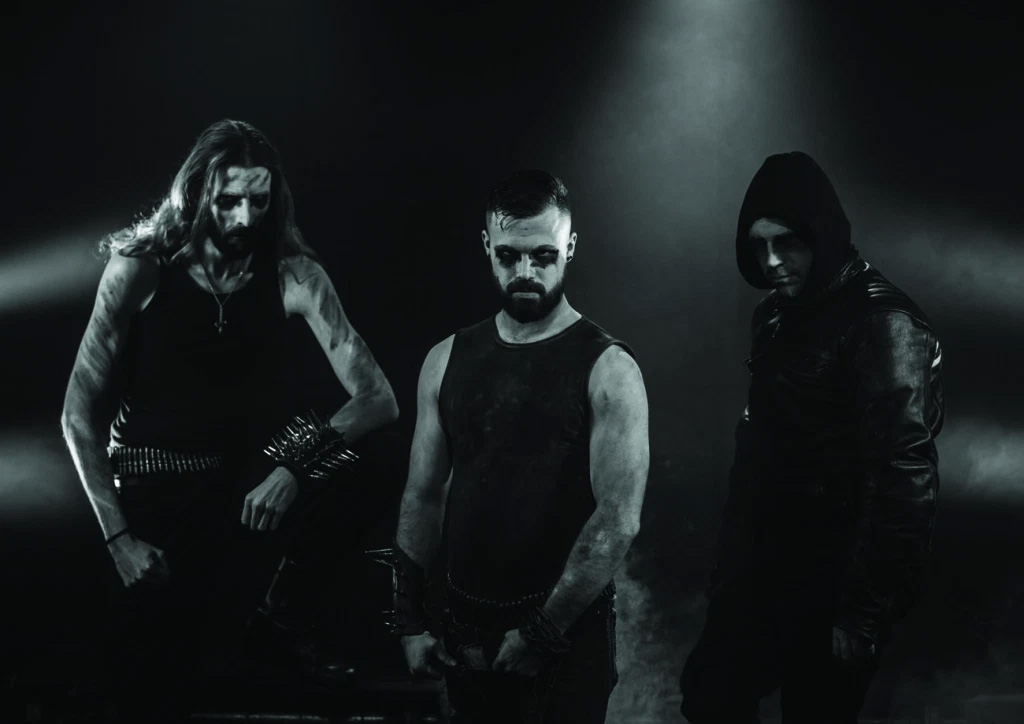 Speaking of Asgrauw, you started off as quite an old school oriented black metal band. However, there was a twist. Mainly I’m speaking about your thematic approach. Your debut went along the slightly more “regular” topics, but already from “Krater” you started exploring much deeper and much more unusual subjects. As the lyrics are written in Dutch, can you give me a deeper insight into the covered topics?
Speaking of Asgrauw, you started off as quite an old school oriented black metal band. However, there was a twist. Mainly I’m speaking about your thematic approach. Your debut went along the slightly more “regular” topics, but already from “Krater” you started exploring much deeper and much more unusual subjects. As the lyrics are written in Dutch, can you give me a deeper insight into the covered topics?
Asgrauw: However we adopted the Scandinavian style, it would be stupid if we, as Dutch guys, would sing about Vikings or snowy mountain peaks. Nor do we believe in trolls. So that’s quite a limitation in terms of topics…
After our debut we started to write concept albums. Simply because it felt good and made sense. “Krater” is about the apocalypse that awaits us after the super volcano Yellowstone erupts. Science is convinced that this is about to happen in the near future. The result will be devastating and apocalyptic in nature. This theme came up after a trip on Mount Etna. On the travel back, the volcanologist that gave the tour, expressed his personal concerns on Yellowstone. The way he described it was impressive and especially frightening.
It is possible that such a thing could happen in our lifetime. People do not think about this in daily life. But some frightful things are unavoidable.
I would like to take a deeper focus on your third album. “Gronspech” is dealing with your local traditions and folklore. I must say I was very pleasantly surprised with your choice of topic. It is very refreshing to see a band who chooses their own history and mythology instead of constantly abusing the more famous foreign ones. Did you do any sort of deeper research when writing lyrics? Also, can you perhaps give us a short insight to at least some of the topics covered? Maybe recommend some books on the topics?
Asgrauw: We’re not the only Dutch band that have lyrics about folklore. Maybe that’s because there is a lot of history going on here. For “Gronspech”, Asgrauw took stories from in and around Groesbeek (Gronspech means Groesbeek in dialect).
Two band members, Kaos and Vaal, grew up here and also the band rehearses in Groesbeek. Batr, who’s not from this area, doesn’t understand a single word. The lyrics are written in local dialect.
Vaal and Kaos, who are responsible for all the Asgrauw lyrics, have spent quite some hours delving into the theme and history. Kaos extracted a lot of information from old books from his grandparents. Groesbeek has a dark past. Criminals, slanderers, and other scum, who were banned from the city Nijmegen (+/- 10 km away), created a new settlement which has become Groesbeek. Many old folktales can be found here. Also partly because Groesbeek is surrounded by dark forests, where happened a lot in WWII as well. If you walk through it (and you are open to it) you’ll be overwhelmed by a certain dark atmosphere that breaths its history.
At the time “Gronspech” was released, Meslamtaea was already up and running again. This time with the two of you at the helm. Thus came a masterpiece, if you ask me. “Niets en niemendal” brings along a different side of black metal. A more complex side of the genre with much wider variety of influences. Again, I must ask about the topics covered. It is obvious from the cover picture that the album deals with annihilation of human race. By our own hand, I might add. Do you find such scenarios a positive or a negative outcome? On the one hand, the planet will survive and probably recuperate from our damage. But on the other, humanity faces extinction. Please elaborate.
Batr: “Niets en niemendal” has been received very mixed. Some reviewers were enthusiastic, while others couldn’t get into it. I cannot blame them. It’s certainly not easy-listening metal. It takes a few spins to get it, and it’s not a pleasant ride. It is a personal work of art in which all time, passion and energy has been put into. Only for open-minded listeners.
Many black metal bands glorify war, violence and destruction. We don’t. We long for silence and tranquility and cannot unite with the modern urban world and the masses that march the endless asphalt. Black metal is the perfect medium to express negative emotions and thoughts. At the time of Annwfyn I was looking for a way to express through a kind of poetry. With the resurrection of Meslamtaea, that creative style of writing lyrics continued.
Where Annwfyn took a contemplative, even spiritual direction in terms of lyrics, Meslamtaea mainly canalises negativity, frustration, hopelessness and fear. Being not a negative person in daily life, I feel that the situation on earth is on a sliding scale. It’s impossible to deny that earth would be better off without mankind. Earth is a chain of connected, fragile ecosystems. Every species has a purpose.
Except mankind. We are completely misplaced, we’re programmed to destroy and cannot survive without technology. We are a strange kind of monkey. Maybe Erich von Daniken is right about extra- terrestrial input into human DNA?
“Niets en Niemendal” focuses on nuclear events in particular. How two cities are wiped out, leaving nothing but blackened soil under a mushroom cloud. Also the Chernobyl disaster and aftermath are very intriguing. The suffering and the heroic deeds of hard-working man that is in contrast to the true face of high officials and politicians. Something similar happened in Fukushima. Worst of all, the nuclear waste will be here forever.
Now, year 2020 brings new records by both bands. Seems like both albums are covering similar topics but from different angles. Asgrauw faces the more natural side of things. Order and disorder, as formed by the reconquering natural world. Meslamtaea gives another example of the failing structures of mankind. At least that’s what I took from listening to both. Am I anywhere near the target? Explain your motivations behind “IJsval” and “Geketend in de schaduw van het leven”.
The new albums by both bands highlight the dark side of man and the consequences of their actions.
“IJsval” by Asgrauw is the most direct and straight-forward of the two in terms of lyrics. The world is changing visibly because of global warming. The balance is heavily disturbed and this has consequences for humanity. Melting glaciers, rising sea-levels, immense fires, virus outbreaks and rebellion. It seems that our album has a kind of predictive character. After the release of “IJsval” lyrics have actually come true. Only the track “Leeg”, which is about the extinction of humanity – the end of times – has yet to become reality. Interesting fact is that the tracks are put on the album in chronological order in term of storytelling. There’s a plot. Except for the opening track, “Leeg”. We started with the end, a sort of prelude.
Meslamtaea is of a more personal, poetic and metaphorical nature. “Geketend in de schaduw van het leven” is about Batr’s aversion to big cities, the concrete, the pollution, the disappearance of nature and the ever-growing population. Questioning the meaning of life or the total lack of it… There’s no silence anymore, nor a place to be alone. The album breathes a kind of nostalgia to the past.
Before I dive into music, let me take a second to focus on your cover pictures. Real works of art, if you ask me. Cannot comment on the early Meslamtaea covers, as I haven’t seen them, but the latest ones are absolutely phenomenal! Would you care to comment on your impressions? Were they something you had envisioned or was it the artist’s idea after listening to your songs?
Meslamtaea: The two album covers are made by the artist Maya Kurkhuli from Russia. Maya is a professional illustrator for fantasy books and her work (digitally drawn on a tablet) Is phenomenal. She understands the meaning and intensity of the music, as she plays black metal herself (check out BlackDeath).
On the cover of “Niets en Niemendal” you see a little kid with a gas mask on a garbage heap. He has a crystal ball glass containing the ‘old world’, but even that dream has been destroyed. There’s no past, nor a future for him. The idea came from old war photos of children playing with gas masks. Very bizarre, frightening, unreal…
The art for the new album “Geketend in de schaduw van het leven” is in line with this. A junkie trapped in a poisoned, destroyed world, addicted to precious fresh air. Maya got the music as inspiration, plus a mood board and photos. Such a strange idea is difficult to convey. It is surprising to see that it comes out exactly the way you want it. We kept getting sketches all the time over e-mail and it was great to follow the process.
On the other hand, Asgrauw uses paintings, almost from the very beginning. Again, amazing works of art. Especially with the coloring scheme one does not find too often on a black metal cover. Same question as above, do you work together with the artist or give him ideas?
Asgrauw: The painter J. Putman is a friend of ours. His small oil paintings with a lot of paint and texture do remind of the covers of the legendary Ulver trilogy. And let Ulver be an influence on our music! We give Putman the album theme and some pictures for inspiration, and then we leave him alone for a while. The albums exactly reflect the atmosphere of the music and breaths a 90’s vibe. Also Putman is very active in black metal. We hope to work with him again in the future.
Now off to music. And a tough one! Batr is responsible for Meslamtaea, so describe Asgrauw in your own words. Same for Kaos and Vaal. Describe Meslamtaea.
Batr about Asgrauw: Asgrauw is an intense journey back to the nineties: the heyday of punk and 2nd wave Scandinavian black metal. Pure nostalgia with a own twist. Expect fast tremolo-picked guitars, pounding drums, harsh screams and subtle atmospheric keys. Recommended to fans of Emperor, early Dimmu Borgir, Ancient, Dodheimsgard, Ulver etc. The band doesn’t care much about modern trends in the scene and has clearly set a point on the horizon when it comes to the music we want to play. We are not finished yet.
Kaos about Asgrauw and Meslamtaea: In the music and especially the lyrics of Asgrauw I can express my dissatisfaction with my fellow human beings. The band is perfect for me to let off steam and I get energy from it to bring it live on stage full of aggression.
Meslamtaea though is different… More of an open wound. During the “Utopia” split I was asked for backing vocals. Shortly afterwards I fell into a depression. Then the recording of “Niets en Niemendal” started. At that moment my existence again felt empty and numb. This feeling was reflected in the music and the confronting, negative lyrics of Meslamtaea that dragged me into a world that I don’t wanted to be. My loud shouting on this record, along with the agonizing pain in my throat, nevertheless still gave the feeling that I existed. I considered it a kind of therapy. I can’t listen to the album though. Whether Meslamtaea is the reason, or maybe fate, I don’t know… But during recording the following album “Geketend in de schaduw van het leven”, I again faced some setbacks in life. It was not pleasant then to scream those lyrics that really get under your skin. Batr wanted a lot of emotion on the album. With both whispering, spoken words and extremely loud intensive vocals that really border on tears. Again, I fully embraced the process. But it was no fun. I don’t like to listen to this album myself because of aforementioned reason.
Vaal about Meslamtaea: I can say Meslamtaea is really something else. Batr has a talent for writing music in a style that is different from any black metal. Meslamtaea is a typical example of writing free style black metal, which give the listeners the feeling that there is no hope. Whether you like it or not.
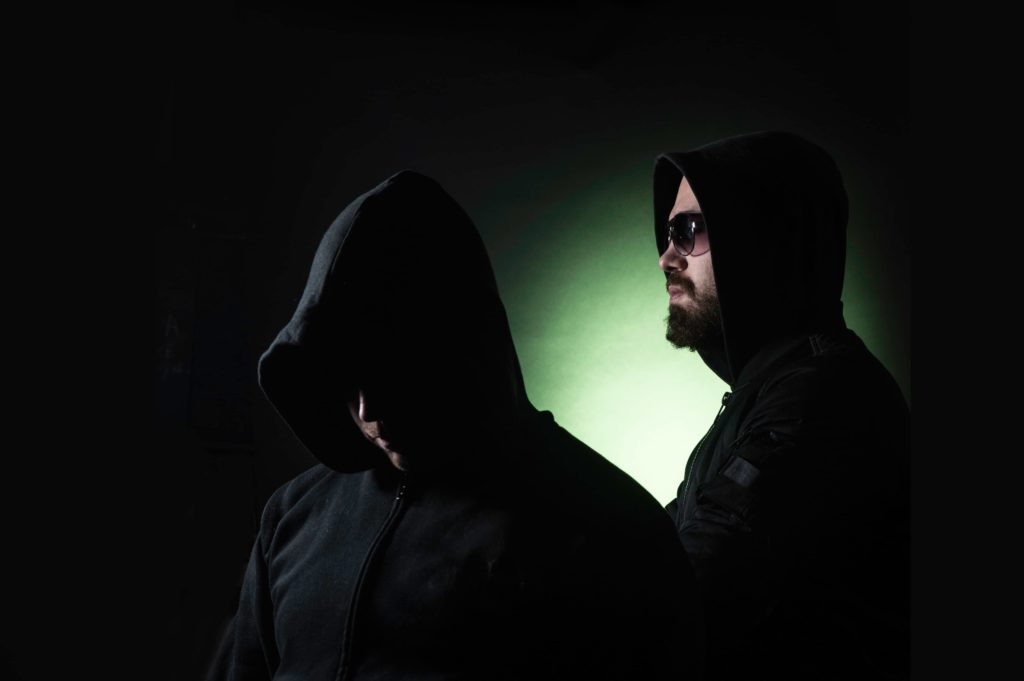 Let me give you a hand now. Starting with Meslamtaea, as the older of the two. It is obvious your influences come from a variety of genres, even if you focus your music on black metal. Can you name some of the bands influencing Meslamtaea?
Let me give you a hand now. Starting with Meslamtaea, as the older of the two. It is obvious your influences come from a variety of genres, even if you focus your music on black metal. Can you name some of the bands influencing Meslamtaea?
Batr: Today’s Meslamtaea pushes far beyond the traditional boundaries of the genre. Frankly, it can’t even be said that the focus is primarily on black metal. Black metal kids probably don’t find jazz or 70’s psychedelic rock cool. I don’t value that opinion. My projects Annwfyn (semi-acoustic) and Meslamtaea (black) are on completely different sides of the music spectrum. But very comparable to my ears. Distortion, harsh vocals and blast beats are only a tool to create a certain atmosphere. Also with an acoustic guitar, saxophone or piano one can create a mood. I know some jazz that sounds more intense than many black metal bands do. I listen to all kinds of genres and I feel like it all blends together.
It goes without saying that the 2nd wave Scandinavian black metal has a great influence on Meslamtaea. Tremolo picked guitars, blast beats and atmospheric synths. Meslamtaea often slows down to a heavy tone that I get from doom metal (Mournful congregation, early Paradise Lost). I value a nostalgic, melancholic or even ethereal mood. Ebow is therefore a widely used instrument. Bands like (early) Alcest, Amesoeurs, Sigur Ros or God is an Astronaut are a master of creating that desired atmosphere. Don’t forget the psychedelic bands from the 70’s either. YES has a major impact on Annwfyn and Meslamtaea.
I am primarily a drummer and I increasingly challenge myself with odd time signatures. Prog rock (Spiral Architect, Gordian Knot) and old technical death metal (Death, Aghora) inspires me. Modern technical metal might be played very well, but for me it’s often too mechanical. I like an organic sound. I used a vocoder on the new record. An idea that I copied from Cynic.
Music is not a competition to see who can play the fastest. I value intensity, emotion and a message more. The late 90’s were not only the heyday for black metal, but screamo / metalcore as well. Bands such as Creation is Crucifixion, Shai Hulud and Catharsis were the top in terms of intensity and explosiveness.
Meslamtaea has always been experimental. Especially the last two albums are recommended for fans of Fleurety, Murw, Ved Buens Ende and the fantastic Vargnatt demo from Ulver. Last but not least fusion-jazz. Stuff like Mahavischnu Orchestra, Allan Holdsworth and the twisted and extremely complex music of Mats/Morgan band could not be missed in any household.
You perform very diverse music. However, you manage to keep a definite flow to the songs and albums. Are there a lot of calculations involved when writing and putting all those different pieces together, or do you let the music flow out of your mind as naturally as possible?
Batr: As explained I get inspiration for Meslamtaea from a wide diversity of music, but even more from moments that there is total silence. Which is unfortunately rare today. On the computer I run several sessions at the same time. I take the recordings-in-progress with me on a portable music device and listen to it as often as I can to be inspired for new ideas. Each track is a long-term project and it can take months before a song is matured.
In current black metal it is a trend to improvise, give the reverb knob a full swing, endlessly repeat riffs and make a drone sound that transports you through the galaxy. That is cool and I wish I could. But for me, for some reason, everything must always be complicated and full of detail. The writing process is very conscious and feels like puzzling. All pieces need to be there, and they need to be on the right place. I like music with variation and only little repetition. Also I like to work with dynamics and contrasts. Hard-soft, hopeful-negative and so on. At the moment, the studio and workflow is set up in such a way that I can press the record-button at any time, without the overall sound losing consistency.
Goes for both, as both bands are highly productive with regular releases. Do you find time for self-evaluation? Time to look and listen to what you have created and maybe change some parts before you actually record them? Are there many pieces scrapped when you finish the creative process?
Asgrauw: We always evaluate what we are doing. As we keep the production in our own hands – we do recording and mixing ourselves – we also have no financial- or time pressure to complete something in a short time. We rehearse every week and we keep on evaluate or tracks in a critical way. There is always room for improvement. On the other hand, we don’t want to get stuck, or rewrite songs until eternity. We know about some talented musicians who are never satisfied and have a stack of fantastic, but unfinished albums on the shelf. That’s a shame.
Meslamtaea: The above also applies to Meslamtaea. With the difference that everything is written and recorded by only one person, and the feedback from others during the process is lacking.
Working on an album for a long period of time makes your ears tired. You can sometimes no longer judge it subjectively. Then it is time to let go of the music for a while and do other things.
As, from my perspective, you have yet to struggle with quality, do you think you will recognize the moment when quantity takes over?
Asgrauw rehearsals are not some social booze party. It is primarily about the music and we are quite focused on writing. That is why we don’t have a big gap between our releases. And not because we value quantity. We are also lucky that Vaal is a real riff machine. Asgrauw has always a fair amount of guitar riffs on the shelf. We are in no hurry though to expand the Asgrauw discography. We only want to make good quality music that we fully support ourselves.
Asgrauw is a much more straight-forward musical unit. Not much experimentation when it comes to music itself. However, you stay far away from being yet another band mooching off the Scandinavian legacy. Was it your goal from the start to build upon the roots?
In reviews we sometimes get criticism that Asgrauw is not very innovative. No, we’re not! We want to make 2nd wave Scandinavian style black metal with a touch of energetic punk. We don’t necessarily want to add something new to the Scandinavian legacy of 25 years ago. However, we’re not some copy and we like to add some own DNA. Asgrauw plays music that we like to hear ourselves. That’s it.
Of course you hear the clichés that belong to that 90’s style. But we consciously avoid simplicity and average tricks. Riffs often go into the trash can if it is too cliché. We want to keep it technically sound and interesting.
Also, you did grow musically over time. Yet, not too far. I guess it is a natural progress a band needs to have in order to avoid stagnation. Do you see a line Asgrauw would not cross, in terms of growth?
In the first place, it is only important to us that we enjoy what we do here and now. Yes, we have learned as a band the past 10 years. Listen to the sloppy demo and compare it to “IJsval”. Our debut “Schijngestalten” is not the tightest album either. But that was then, we liked it and we still do. After every album we obviously think we will never match it again, however at the moment we still keep developing. But what is progress for one person is decline for another. For example, we had critics that our new album is over-produced. But it is a do-it-yourself recording, done in Batr’s attic. We have spent a lot of time getting the best out of it. Ah well, opinions…
But, growing continuously? For most bands there comes a time when they no longer surpass themselves or move to another direction. Many old bands are way beyond their peak. But these grandpa’s still play with much joy for full concert halls. That’s what it is about. Doing what you like. And that’s what we do. That’s all.
That would be all from me. If you have anything further to add, or you think something important got left out, now is the time to speak. Thank you all for the interview!
Thanks for your time, cheers!
